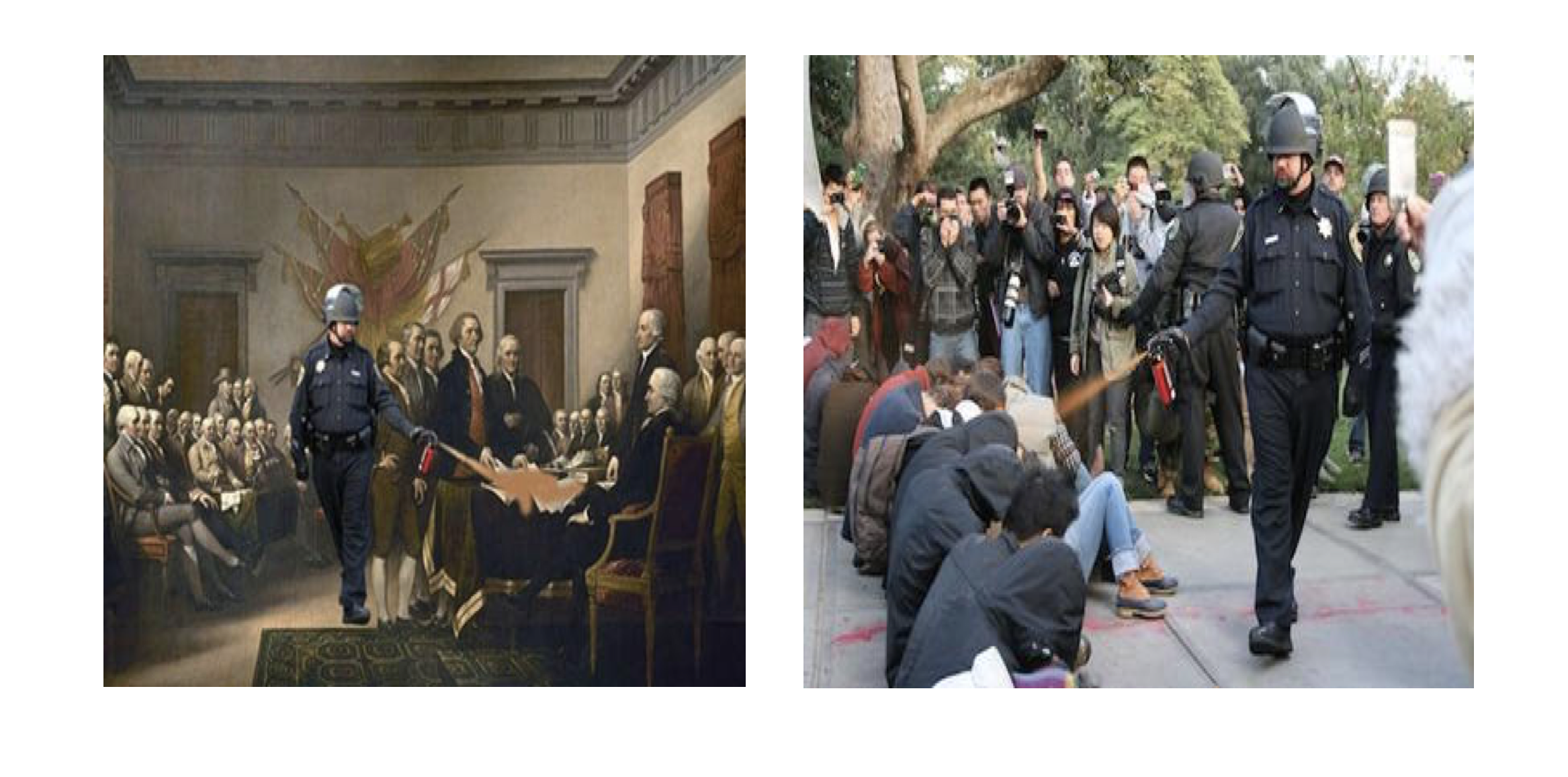2.5 Visuals
The second step of the narrative change campaign planning process – Build out the elements - consists of eight elements that guide you through the development of the campaign tools and approach. On this page, we focus on the fifth element - Visuals.
- Messages
- Stories
- Slogans & hashtags
- Evidence
- Visuals
- Messengers & supporters
- Threshold forum/publication
- Action plan
While the elements in the table above are presented in a series, the reality of this step is that you need to iterate back and forth among the different tools through the campaign build out process.
In the fifth element of the build out process, the focus is on a very powerful pillar of any narrative change campaign seeking to trigger responses – the visuals.
The visual elements of a reframing campaign usually include some still images and possibly videos that can be used in multiple ways. The still images can be used as posters, stickers, online postings of various kinds, t-shirts and all kinds of merchandise for the campaign, if you are going in that direction. The videos can be directly used on the campaign websites and presentations, but are particularly useful these days with short versions appearing in news feeds on social media. The visual is key in the attention economy of the online world and as we learn from framing theory and practice, visuals are also possibly the most powerful trigger to a whole story around the issue you want to raise. Putting the old adage ‘a picture is worth a thousand words’ into a framing perspective, ‘a picture triggers a thousand words’. The following example jumped off the newsfeed as a perfect illustration of this point:

Figure 1: Plastic bag iceberg image (George Gamboa)
It’s impossible to give prescriptive guidance when it comes to generating the visual element of a narrative change campaign, but a number of approaches and experience from practice are helpful in pointing campaigners in a playful, creative and focused direction for this task. We offer the following four main points of guidance.
Develop or select visuals that are engaging, challenging and can serve to trigger the story you want to start.
The first approach we propose is the application of the key campaigning principle of balancing resonance and dissonance in the selection of visuals. As with other elements, you should work to select visuals that contain a key element of the familiar, but also create dissonance. The poppy hijab case is the perfect example to illustrate the approach:
CASE 1 – British Future – Poppy Hijab - UK

Figure 2: Poppy Hijab Campaign Photo
In the discussion of the choice of visuals with the campaigners, one reported that they thought the visuals were much more important than whatever words were said in the campaign. Taking two very culturally contested symbols – the poppy and the hijab – and combining them in this way, brought a huge response to the campaign.
The campaign team reported that the first image they had thought of using was of a priest and an imam laying a wreath of poppies on Remembrance Day, but thought that was too predictable. Through a brainstorming process, they came up with the scarf idea and they worked with a young designer to develop it. It was such a sticky outcome of the campaign that it is still sold as a product by the organisation which organises Remembrance Day – the British Legion - evidence that this visual (and artefact) made a lasting impression and contributed greatly to the impact of the campaign.
This example also highlights that campaigners need to be aware of the power of such culturally resonant symbols, as they will definitely bring responses – positive and negative! The lesson here is that you really need to test the effectiveness of these visual choices before going public, as the intended message may be perceived quite differently than you had planned. We discuss message testing in step three of the campaign development process.
Develop visuals using a meme approach.
The second point of guidance from practice is to understand the production of campaign visuals in the way that those producing memes do. For example:

The second picture is of a policeman pepper spraying protesters at an Occupy protest in UC Davis in California, USA in 2011. Immediately the cold, cruel, nonchalance of the policeman in the act speaks to a dismissive attitude (at minimum!) to the right to assembly and free speech of the protestors. And immediately, this was cut into the meme of a very well know painting of the signing of the Declaration of Independence and therefore, sets off that cultural trigger. Therefore, this process of connecting images together for emphasis or in the case of the poppy hijab, to create dissonance can we a very powerful driver, point of campaign engagement and supporter of your message. Of course, getting the balance right is crucial.
Be prepared to go though many drafts and feedback sessions to get the balance right.
In terms of practical approaches, one of the campaign teams on our Narrative Change Lab started their image development process by building up a pool of images from other campaigns (commercial and NGO) collected by all team members. This bank of images served as inspiration and an agenda setter for the campaign by triggering bigger discussions about what the campaign team wanted from its own set of campaign images, e.g. the look and style, combination of image and words, emotions conveyed through the images. This discussion and the consideration of the other elements of the building out process led to the first draft of images for the campaign. These were often just rough hand drawn sketches. After this initial process, the team found stock images and developed poster ideas around them with slogans, hashtags, logos, etc. The process of redrafting and refining these went on for some time right up to the message testing process. This is a good illustration of the need for an iterative process between all elements of the build out process.
Video development is also a significant investment in time and needs professional support.
In the development of the video for this project, we went through a long process facilitated by a creative producer to work on the concept and get to the essence and then worked with a video production company in making the video. More interview-based videos may take less time, but the effort needed to get the focus and tone right in these tools should not be underestimated. There are so many good sources that deal comprehensively with video production so we will not dig deep here. However, you are starting well if you understand the core ideas of how the visuals of a narrative change campaign can be built out in an engaging and resonant way.
Step 2. 5 Visuals
-
What images are you considering using in your campaign? Collect the options and don’t limit yourself at the early stages.
-
Do your images have the power to engage and challenge the audience?
-
What are your selected images triggering? Ask people outside the campaign team to give you their first impressions.
-
Are the images you have chosen supporting your intended messages?
-
Do you think your images have the potential to be widely shared on social media?